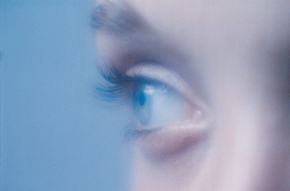The expression "20/20" is so common in the United States that there's even a TV show named after it. Here's where the 20/20 designation comes from.
By looking at lots of people, eye doctors have decided what a "normal" human being should be able to see when standing 20 feet away from an eye chart. If you have 20/20 vision, it means that when you stand 20 feet away from the chart you can see what the "normal" human being can see. (In metric, the standard is 6 meters and it's called 6/6 vision). In other words, your vision is "normal" -- most people can see what you see at 20 feet. (From here on, please assume that the word "normal" has quotes around it).
Advertisement
If you have 20/40 vision, it means that when you stand 20 feet away from the chart you can see what a normal human can see when standing 40 feet from the chart. That is, if there is a normal person standing 40 feet away from the chart and you are standing only 20 feet away from it, you and the normal person can see the same detail. 20/100 means that when you stand 20 feet from the chart you can see what a normal person standing 100 feet away can see. 20/200 is the cutoff for legal blindness in the United States.
You can also have vision that is better than the norm. A person with 20/10 vision can see at 20 feet what a normal person can see when standing 10 feet away from the chart.
Hawks, owls and other birds of prey have much more acute vision than humans. A hawk has a much smaller eye than a human being but has lots of sensors (cones) packed into that space. This gives a hawk vision that is eight times more acute than a human's. A hawk might have 20/2 vision!
Advertisement
